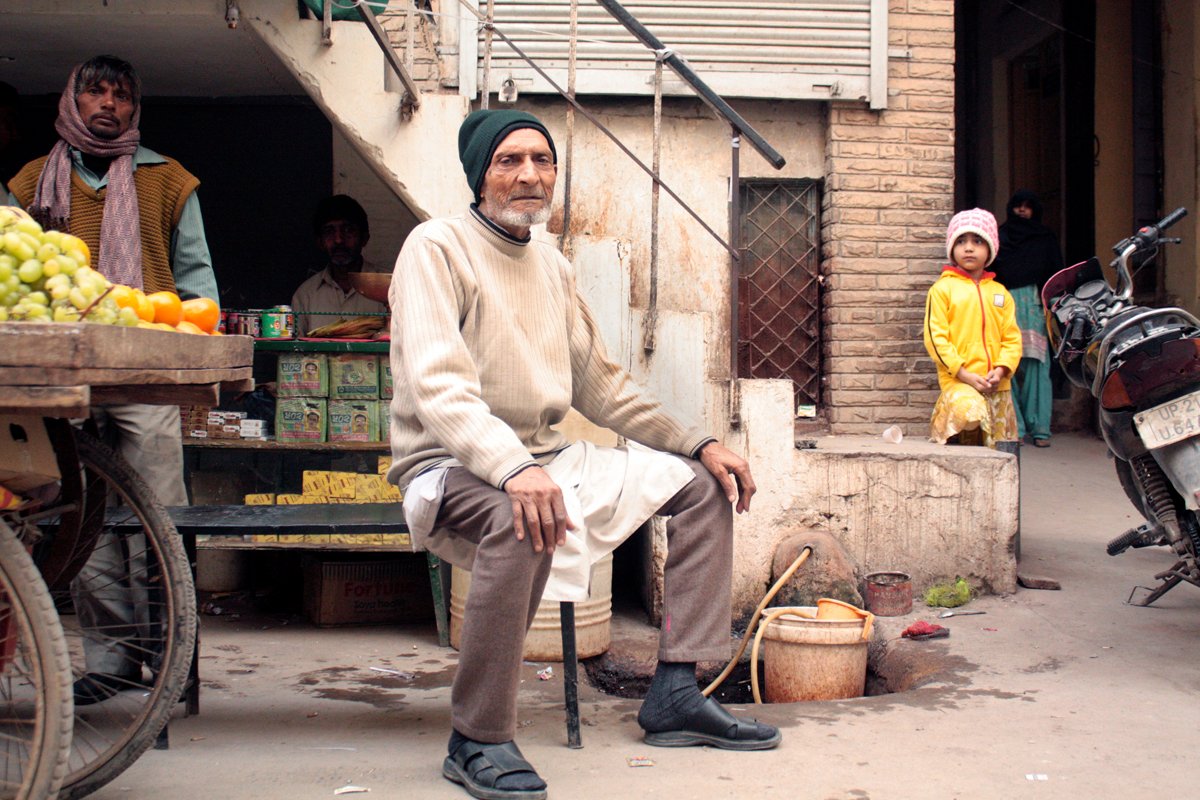For this week's story on #MuseumofMaterialMemory, Sri Muktsar Sahib-based Khushveen Brar writes about a salwar and a pair of panjeb that belong to her nani, Hardev Kaur, and bequeathed to her by her elder sister-in-law, Gurdial Kaur, both of whom hailed from Faridkot, Punjab. 1/ 

Khushveen writes that she was only four years old when her nani passed, but the death impacted her mother deeply, who was the youngest of six siblings. She shares a photo of her grandparents in their late twenties, with their two eldest children. 2/ 

In maternal home in Ajitgill village, Faridkot, she came across a sandook belonging to her nani. Inside it, were clothes, trinkets, handwritten notes, photographs, and two objects of particular prominence - a green salwar and a pair of silver panjeb. 3/
"The story of the salwar begins with my nani’s mother in law," Khushveen writes. Brought as a part of her wedding trousseau, it dates to the late 1910s. The salwar is a beautiful shade of emerald green and sewn in silk satin. 4/ 



"What astonished me was the ginormous ghera. As opposed to the salwars of today that have a belt and pleats, this has no belt but a ghera measuring 98 inches – which is 8 feet long! The huge ghera does give it a very heavy look which modern day salwars can’t replicate." 5/ 

After the death of the matriarch, all her possessions were passed down to the middle son’s new wife, Gurdial Kaur, who was born in Phidde Khurd, Faridkot and married in 1931. Here she is seen with her mother, and later as a 90 year old in 2004. 6/ 



The silver panjeb or jhanjran, were a part of Gurdial's wedding trousseau. The local jeweller dates them at nearly a 100 years old, which means they must have been forged in the mid to late 1920s. The pair have an interlinked design and small flower motifs on the clasp. 7/ 







They are very heavy – each independently weighing 16.8 tole (168gm) or together at 33.6 tole (336gm). They are 12 inches in length, and the band is 1.5 inches. Gurdial Kaur was 5 ft 8, with big hands and feet, which explains the jhanjran’s big size. 8/ 



When Hardev Kaur got married in 1950, Gurdial Kaur, only 15 years older, performed the duties of mother-in-law at the wedding ceremony. She had no children of her own, and felt no need to keep anything for herself, thus, bequeathed everything to the new bride. 9/
..In this way, the heirlooms were passed from Hardev Kaur to her daughter, and further to her granddaughter, Khushveen, who writes that when her nani passed away at 74 from a heart-attack, it shattered her sister-in-law, who "laid her head in her lap and cried all night." 10/
Read the full piece here - Heirlooms from Faridkot by Khushveen Brar museumofmaterialmemory.com/heirlooms-from…
• • •
Missing some Tweet in this thread? You can try to
force a refresh








